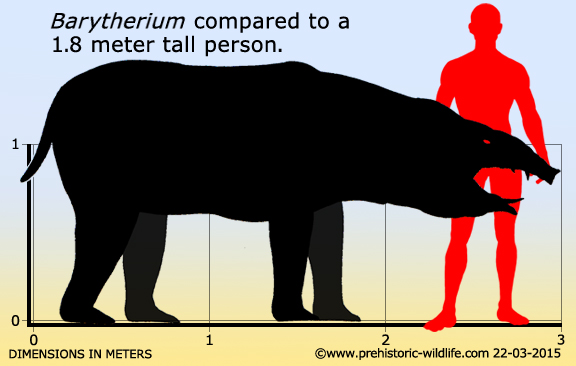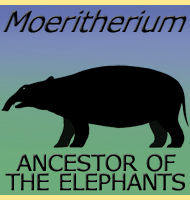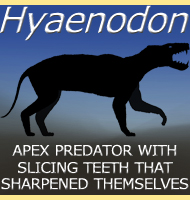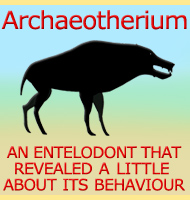


Barytherium

Name:
Barytherium
(Heavy beast).
Phonetic: Bah-ree-fee-re-um.
Named By: C.W. Andrews - 1901.
Classification: Chordata, Mammalia,
Proboscidea, Barytheriidae.
Species: B. grave (type).
Diet: Herbivore.
Size: Around 3 meters long.
Known locations: Egypt, Libya, Oman.
Time period: Priabonian of the Eocene to Rupelian of
the Oligocene.
Fossil representation: Remains of many individuals,
though to varying levels of completeness.
Barytherium
was a prehistoric elephant quite unlike modern day varieties. The key
difference is that of the tusks, there were two pairs in both upper
and lower jaws. The tusks of the upper jaws pointed out to the sides
while the lower pair pointed forwards. Popular thinking is that these
were feeding adaptations suited for shearing plants before they were
processed by the rear teeth. Later elephants such as gomphotheres
like
Gomphotherium
would develop this arrangement even
further, though with a reduced number of tusks (four as opposed to
eight).
The
shape of the skull
indicates that Barytherium had a proboscis
(trunk), though in all
likely hood it was probably short. This is because long trunks are
pretty much unknown in very primitive elephants, and the adaptations
for trunk attachment to the skull are not as well refined as they are
in later forms.
----------------------------------------------------------------------------
Random favourites
 |
 |
 |
 |




